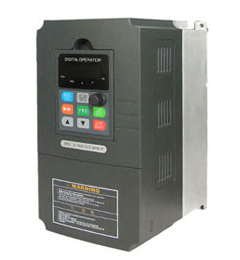How Much does a Variable Speed Drive Cost?
First, what size of variable speed drive (VSD) is being approached? When we speak about costs, remember that cost is quite different between a 10 MW variable speed drive and a 7.5 kW variable speed drive. Performances vary as well, in per unit basis and absolute value (kW).
There are also different types of variable speed drives for different types of motors, that is synchronous or induction for example. Therefore, evaluating case by case makes sense and other considerations along with the above mentioned also needs to be carried out. Here are some examples.
A VSD is shortened for variable speed drive, it's a sort of AC drive which control the speed of the ac motors depending on frequency change. variable speed drive is very useful in industry today, but much thought to the application must be taken. For example, if you are controlling motor speeds at or below 50% to 75% (and maintaining them in this range), you may want to consider changing motors to a different RPM. Variable speed drive produces harmonics that can have an adverse effect on the electric motor and also the utility supply power. i.e. if you have an 1800 RPM motor, but are running it 1200 RPM, it would be more cost effective to purchase a 1200 RPM motor and use a magnetic starter.
The other issue to consider is harmonic filtering. The utility does not like to see harmonics being produced from the variable speed drive and put back onto the power source. Refer to IEEE 519 for acceptable limits and practices. Some variable speed drives are 24 pulse systems, so they do not require harmonic filtering, but this is another question to ask the manufacturer.
Line reactors may be something to consider, if there are surges in power from the utility company and also look at the ride through times/levels for voltage sags. Our plant is at the end of the grid and we are subject to voltage sags, so we buy variable speed drive's that can ride through a 50% sag for 12 cycles (0.2 seconds), then a 25% sag for 18 cycles (0.3 seconds) and so on. If the variable speed drive is not capable of riding through some sags like this, you will have nuisance trips.
Variable speed drives can be very helpful in saving energy and controlling process, but there are a lot of things to consider before buying or upgrading.
There are also different types of variable speed drives for different types of motors, that is synchronous or induction for example. Therefore, evaluating case by case makes sense and other considerations along with the above mentioned also needs to be carried out. Here are some examples.

- There are multiple motors that must start with the variable speed drive to reduce the starting current. In this case, one should consider the number of motors that can start in succession, using the same variable speed drive.
- Check with the variable speed drive manufacturer whether they offer a simplified variable speed drive for starting only. For starting only, the losses aren't of greater importance. Preferably you may want the variable speed drive to come with bypass switch already incorporated to it.
- As it comes to low cost soft starters, those vary only voltage, never forget that these soft starters reduce the torque of the motor to the ratio of voltage to the power of 2.2 (yes 2.2, not 2), so you will want to evaluate if the motor will accelerate the load with the desired voltage, and if so, without overheating. Also remember that some loads are more demanding than others. Check for torque requirements and load inertia. If the motor can accelerate, then a soft start can be used. If not, a variable speed drive can be one solution.
- When the process requires, or the output of production varies, the application of a variable speed drive makes sense.
A VSD is shortened for variable speed drive, it's a sort of AC drive which control the speed of the ac motors depending on frequency change. variable speed drive is very useful in industry today, but much thought to the application must be taken. For example, if you are controlling motor speeds at or below 50% to 75% (and maintaining them in this range), you may want to consider changing motors to a different RPM. Variable speed drive produces harmonics that can have an adverse effect on the electric motor and also the utility supply power. i.e. if you have an 1800 RPM motor, but are running it 1200 RPM, it would be more cost effective to purchase a 1200 RPM motor and use a magnetic starter.
The other issue to consider is harmonic filtering. The utility does not like to see harmonics being produced from the variable speed drive and put back onto the power source. Refer to IEEE 519 for acceptable limits and practices. Some variable speed drives are 24 pulse systems, so they do not require harmonic filtering, but this is another question to ask the manufacturer.
Line reactors may be something to consider, if there are surges in power from the utility company and also look at the ride through times/levels for voltage sags. Our plant is at the end of the grid and we are subject to voltage sags, so we buy variable speed drive's that can ride through a 50% sag for 12 cycles (0.2 seconds), then a 25% sag for 18 cycles (0.3 seconds) and so on. If the variable speed drive is not capable of riding through some sags like this, you will have nuisance trips.
Variable speed drives can be very helpful in saving energy and controlling process, but there are a lot of things to consider before buying or upgrading.

